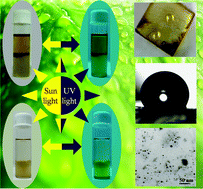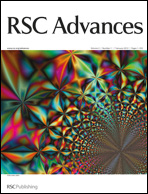Rapid microwave synthesis of fluorescent hydrophobic carbon dots†
Abstract
Fluorescent hydrophobic carbon dots (HCDs) have been fabricated from a poloxamer by a simple microwave assisted process within a few minutes for the first time. Small and distinct spherical HCDs emitted bright blue and green fluorescent light depending upon the excitation wavelength and were dispersed easily in a wide variety of organic


 Please wait while we load your content...
Please wait while we load your content...